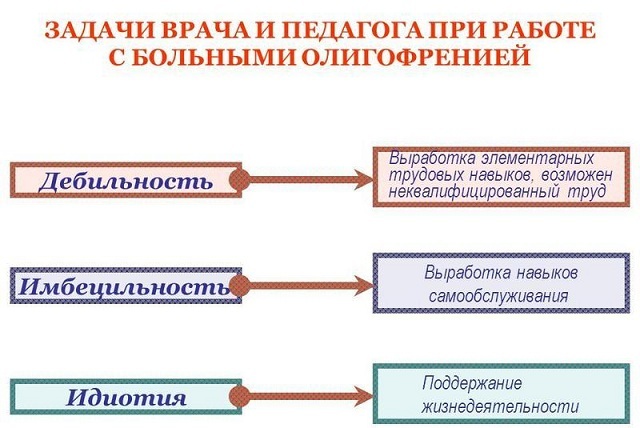 The Kandinsky-Clerambo syndrome( mental automatism) is a rather serious manifestation of mental disorders, which is characterized by the loss of mental( emotional, sensory, motor) and thought processes.
The Kandinsky-Clerambo syndrome( mental automatism) is a rather serious manifestation of mental disorders, which is characterized by the loss of mental( emotional, sensory, motor) and thought processes.
Along with this, the patient realistically thinks that any extraneous forces manipulate his consciousness.
The Kandinsky-Konovalov syndrome consists of delusional hallucinatory states. The ill appears to be affected by a wide variety of ways, this includes:
- spoilage;
- the evil eye;
- radiation;
- extraterrestrial interventions, which he can not resist.

Kandinsky and Clerambo - scientists who first described the syndrome of the same name
Contents
- Why does the disease occur?
- Types and varieties of flow
- Associated automatism
- Perception disorder
- Motor type of deviation
- Delusional hallucinatory flow type
- Inverted variant
- Hallucinatory paranoid syndrome
- Main symptoms
- Features of the disease course
- Therapeutic and rehabilitation measures
Why does the disease occur?
Kandinsky's syndrome is a pathology that arises from other serious illnesses. These include:
- a variety of psychoses( alcoholic, infectious, vascular);
- schizophrenia;
- is an obsessive-compulsive disorder.
More rarely this pathology can be caused by the following reasons:
- head trauma;
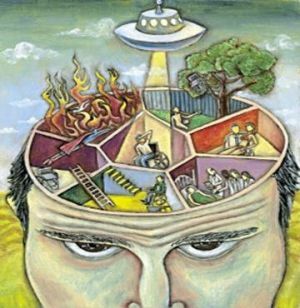
- use of narcotic drugs;
- of the brain tumor;
- intoxication with chemicals.
These states have a very strong influence on the psyche, which leads to the inclusion of a protective mechanism of the body, which appears in the form of automatisms.
The most frequent manifestation is sensory automatism, which justifies traumatic events, and treats them as a consequence of external influences.
Types and varieties of the
Current Mental automatism is of three types:
- associative( ideator);
- is cannabinoid( sensory);
- kinesthetic( motor).
There is also a delusional hallucinatory and inverted variant of the course of the syndrome.
Associative Automatism
Automatism data is characterized by the presence of an imaginary influence on a person's mental activity, mainly on thinking. The most common symptom of associative automatism is an uncontrolled flow of thoughts( mentalism), - it seems to the patient that everyone around him knows what he is thinking about.
Another symptom of Clerambo syndrome is a mental sounding( a person's thoughts are first heard in his head silently and incomprehensibly, and then distinctly).As a result, the symptom of the "disappearance of thoughts" is formed
Also, "specially made dreams" are often observed, which is also a consequence of the influence of some other force. To associative automatism is that the patient has to remember certain events from life, while he is shown pictures with this event.
Also people with an ideological kind of violation can claim that their emotional state, mood, are controlled by someone else.
Perception of perception
This kind of automatism can include strange and unpleasant sensations that supposedly arise from the pressure of otherworldly forces. There are: a rush of heat, a variety of pains, which are rather pretentious in nature - pulsation, twisting, raspiranie.
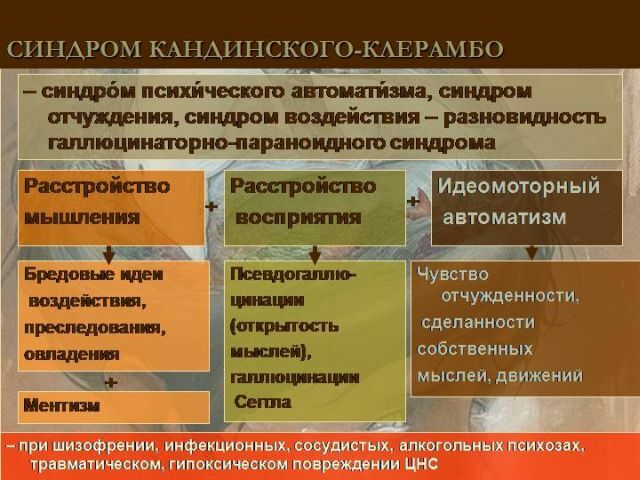
Motor type deviation
In this case, a person is just sure that his movements are controlled by someone else. Obsessive of the disease complain that they are deprived of the ability to move freely, and that their motor system is controlled.
The main symptom is speech motor automatism( the language of patients is spoken from the outside, it seems to them that the words do not belong to them).
Delirious hallucinatory flow type
In this case, several options for the course of the disease are envisaged: delusional and hallucinatory:
- with delusional version of , human currents have different kinds of delusional ideas of pursuit, effects, and pseudo-hallucinatory disorders, in turn,or they may be completely absent;
- whereas with hallucinatory flow of pseudo hallucinations are observed, and there are almost no delusional disorders.
Inverted version of
The essence of the inverted version is that the patient believes that he is able to influence people, control their thoughts, movements, change their mood.
Such a condition is always accompanied by a reassessment of the individual, here you can include megalomania, they are often found in the clinic of paraphrenia.
Syndrome hallucinatory-paranoid
The disease develops sharply or can go on in a chronic form: 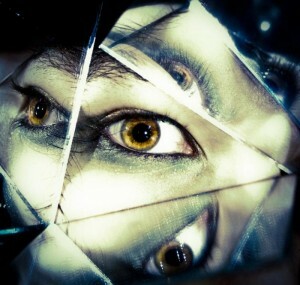
- with acute the development of this disease symptoms are not systematized, and are accompanied by fear, catatonism and pronounced psychic automatisms;
- if current is chronic , the delusional ideas take a systematized character, the effect of anxiety decreases, there is no confusion.
Mental automatisms with this option appear gradually, first associative, then sensory and motor.
The main symptoms of
Motor automatism manifests itself as follows:
- patient's movements are constrained, scandalous speech is observed, unnatural facial expressions and gestures appear;
- a sick person is sure that he is controlled by something or someone else;
- in most patients becomes incomprehensible speech, changes gait;
- there can be different situations in which a person can talk offensive and negative words;
- then the patient begins to justify his behavior by the influence of something an outsider, that someone said it instead of him.
Associative automatism: 
- all symptoms are related to the mind of the patient;
- not rarely he believes that others know what he thinks, follow his thoughts, want to steal ideas, and overhear all internal dialogues;
- many lose control over their actions and moods, and justify it by the fact that they are controlled by someone else and adjusts them to such behavior and thoughts;
- some patients have sharp obsessions, which are accompanied by a feeling of suggestion of someone else's ideas and thoughts to the patient.
Sensory automatism:
- symptoms of pseudo-hallucinatory nature;
- patients often complain of pain that occurs without any reasons, and which they can not give a full characterization( localization, character);
- a person feels tingling, burning, bursting, squeezing, which spreads throughout the body, often changing its location.
According to the patients, such sensations are caused by the influence of extraneous forces( sorcery, evil spirits, aliens).
Features of the disease
The syndrome of mental automatism Kandinsky Clerambo, like other mental diseases, develops in several stages, which are characterized by a certain symptomatology and severity of the course.
During the syndrome, two forms are distinguished: acute and chronic:
- With acute course of , all symptoms are clearly manifested in the patient. In this case, the patient is quite active, talkative, but at the same time it is easily irritable and aggressive. Some patients have a very strong sense of fear. This form has a duration of up to three months, and it is accompanied by pseudo-hallucinations with bouts of delirious ideas. Such ideas cover the patient completely, which completely removes a person from normal life. In such patients, often there are changes in symptoms, obsessive conditions or pains change their localization.
- The development of chronic form occurs within a few years. Clinical manifestations begin to gradually increase: the first signs of ideal automatism appear, the phenomena of motor or sensory automatism are attached to it. The manifestations of this form of the disease are so fuzzy that it is difficult to diagnose.
Treatment and rehabilitation activities
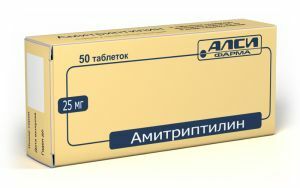 Treatment of the Kandinsky syndrome - Clerambo includes a set of activities, including the use of special drugs( neuroleptics, antidepressants) in combination with psychotherapy sessions, and in the future a long period of rehabilitation.
Treatment of the Kandinsky syndrome - Clerambo includes a set of activities, including the use of special drugs( neuroleptics, antidepressants) in combination with psychotherapy sessions, and in the future a long period of rehabilitation.
If there is a concomitant pathology in the form of psychosis, the treatment is conducted in a specialized place under the constant supervision of medical staff.
The rehabilitation period is long. During this period it is necessary to conduct regular psychotherapeutic sessions, engage in exercise therapy, strictly adhere to the diet( reduce the number of products containing copper).
It is also recommended to spend more time in the fresh air, go swimming. For successful rehabilitation, a patient with psychic automatisms needs the attention of close people, their support and understanding.



